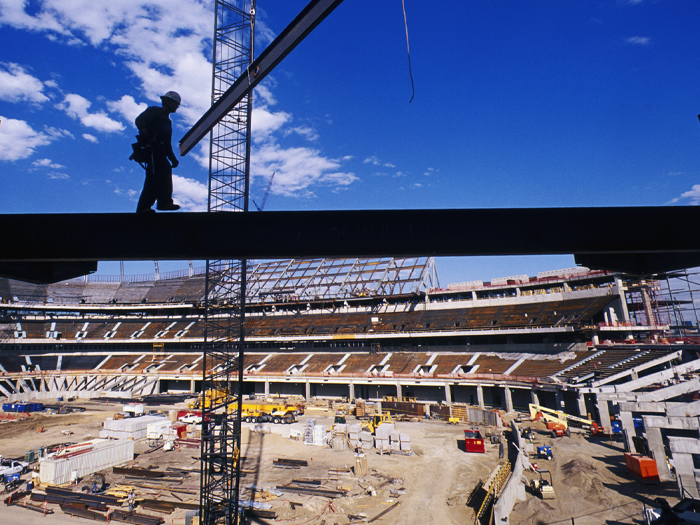Summertime Is Amusement Time! 5 Tips to Minimize Risk for Amusement Park Operators

Part of what makes extreme amusements so exciting is the thrill that comes from a hint of danger when you’re rocketing along on a roller coaster or dropping five stories on a towering water slide.
But according to Dave Harman of Arthur J. Gallagher, the amusement industry is actually one of the safest around. “I’ve been doing this a long time and I think it is an extremely, extremely safe industry,” said Harman. For four decades, he has been the go-to insurance broker in the amusement space, even earning a 2019 Power Broker® designation in the At Large category.
“I’m one of the few retail guys that does the whole spectrum from family entertainment to theme parks, water parks, carnivals and manufacturers,” explained Harman, who also handles a small book of school districts and trucking clients.
According to Harman, the most prominent risk in an amusement park is the water in any aquatic attractions, which presents a risk of drowning, much like any swimming pool would.
“I don’t know how you can prevent those. I mean, you’ve got lifeguard training and you’ve got a wading pool full of people and stuff can happen,” Harman said, but he added that in his four decades in the amusement space, “I’ve never had a big claim on a mechanical device. I’ve never had anything that I would say is significant.”
The amusement industry’s record of safety is in large part thanks to the intense regimen of testing and checks on the equipment.
“Each ride that opens up is going to have a daily inspection, a weekly inspection, and a monthly inspection,” said Harman, in addition to inspections specifically run by insurers. Amusements that travel with carnivals or for state fairs are inspected in each state and also by the operator each time they are set up and broken down.
In the Public Eye
The amusement industry is unique in many ways, Harman said the closest corollary is aviation. Both are public-facing and susceptible to sensational news coverage but statistically are very safe due to rigorous commitments to testing and checking equipment.

Dave Harman, area vice president, Gallagher
The intense focus on safety makes perfect sense for a number of reasons; no business owner wants to harm their own customers and mishaps could be costly, both in terms of settlements and insurance costs, and in lost income if a ride is taken out of service pending investigation — particularly problematic for short-duration carnivals and state fairs.
Even more costly, though, can be the news coverage generated by even minor incidents. “Whenever we have an amusement malfunction of some kind, whether somebody is hurt or not, the press goes crazy,” said Harman. “It is sensational news.”
Such negative publicity can be devastating to attendance and to the operator dependent on that attendance. But an even deeper and more powerful incentive for ride operators to maintain the highest level of safety is the emotional toll tragic mishaps can take.
“If you’re an operator of a water park and you’re a family-run business and you have a drowning, it is totally devastating,” said Harman. “Forget about whether it affects attendance or not. … These people are so into what they do, for them to have that type of an injury, it’s just traumatic. They’re going to avoid that at all costs.”
A Few Risk Management Tips for the Amusement Industry
But that doesn’t mean there isn’t risk, and it doesn’t mean Harman doesn’t have advice for operators to minimize risks and claims:
1) Hiring and vetting. In an industry where equipment-testing is such a focus, it is important not to overlook the importance of having the right workers to operate that equipment. Harman emphasized the importance of a thorough hiring process, with background checks and drug testing.
2) Training. Just as important as having the right people in place is having the right training in place for those people. “You have to train your ride operators properly,” said Harman. “They have classes. … They have procedures that they have to understand, they have to memorize, and they’re tested on.”
3) Document Everything. Even with all the testing and checks that take place, and even with the amusement industry’s record of safety, adverse events are still possible. That’s why it’s important to not only conduct all those checks, but to also document them in case it ever becomes an issue.
4) Communicate. It’s important for operators to stay in touch with ride manufacturers who act as clearinghouses for information on possible defects or wear-and-tear issues. “If something occurs on one of their rides, they will know what happened and … they will send out a bulletin to all the people that operate that ride currently.”
5) Crisis Management. Some insurers include crisis management in their coverage or offer it as a rider, but ride owners and operators can also hire firms themselves.
Harman said it is worth considering: “If there is a really serious adverse event … the owner or the operators can be very emotional, and it’s better to have a private crisis management firm come in and deal with the press.” &










